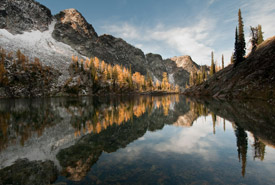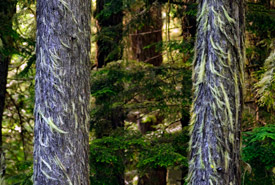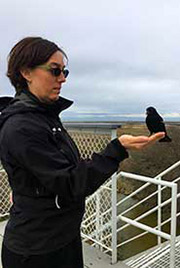Conserving carbon sinks: A natural solution to climate change

Darkwoods mountains, BC (Photo by Bruce Kirkby)
In the global effort to fight climate change, forests, wetlands and grasslands are more and more being recognized for their important role in absorbing greenhouse gas emissions (i.e., carbon dioxide) and storing carbon over the long term. Conserving these “carbon sinks” provides a natural climate solution by absorbing the emissions that are causing climate change.
For more than 55 years, the Nature Conservancy of Canada (NCC) has been a leader in Canada’s land conservation efforts. Over the past decade, NCC has been one of Canada’s leaders in developing forest carbon projects. The amazing part of this story is that forest carbon projects line up very well with NCC’s mission and conservation actions. Protecting carbon sinks in forests also brings with it so many other co-benefits.
For example, in 2008 NCC acquired the Darkwoods lands in southeastern BC, near Nelson. Spanning more than 136,000 acres (55,000 hectares), Darkwoods is Canada’s single largest private land conservation acquisition. Its forests and wetlands absorb and store large amounts of carbon. The project also protects important ecological benefits for biodiversity and provides essential habitat for many species at risk.

Alpine Lake on Darkwoods, BC (Photo by Bruce Kirkby)
NCC’s management of the property allows for many conservation-compatible activities. These include scientific studies, ecological restoration and recreational activities that support the community, biodiversity and climate goals of this project.
In addition, Darkwoods is one of North America’s largest forest carbon projects. It creates carbon offsets by preventing large-scale timber harvesting. The project is evaluated against the Verified Carbon Standard, the world’s leading voluntary carbon standard. This standard assesses the project for its contribution to reducing greenhouse gas emissions by storing carbon.
The project’s co-benefits are also assessed using an additional standard — the Climate, Community and Biodiversity Alliance standard. These include its contribution to protecting old-growth inland temperate rainforest and critically important watersheds, as well as conserving habitat for the many species at risk on Darkwoods.

Lichen on old-growth trees on Darkwoods, BC (Photo by NCC)
NCC uses the earnings from selling carbon offsets from this project to further our conservation and stewardship activities on Darkwoods, as well as on other important landscapes across the country.
Many companies are attracted to this project. Not only does it help their operations become carbon neutral, it also allows them to support landscape conservation in Canada. One of NCC’s longest standing supporters of this project is Proof Inc. For the past five years, this organization has been buying carbon offsets to meet its own climate goals. Purchasing carbon offsets from Darkwoods allows Proof and many other companies to show their strong commitment to climate leadership and conservation. These goals benefit all Canadians.


